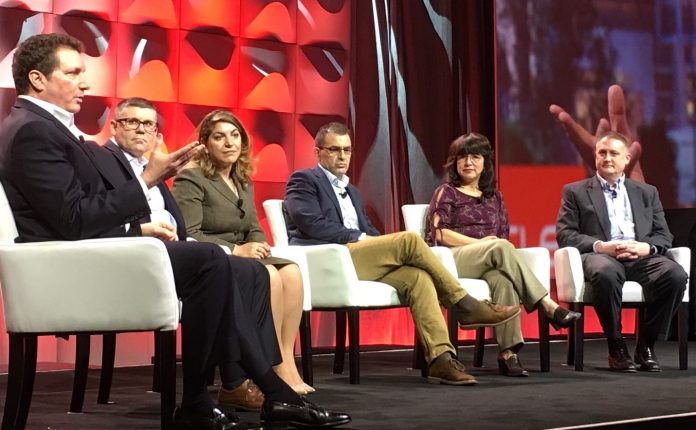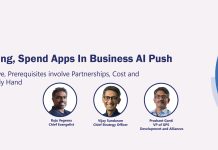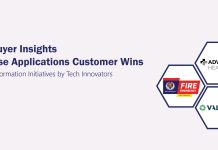
Extending its Human Capital Management market reach, Oracle is jumping onto the Artificial Intelligence and Machine Learning bandwagon but with a twist that underscores the evolution of the database powerhouse.
At its recent HCM World user conference in Dallas, Oracle offered customers and industry analysts a preview of its AI and ML strategy, which takes advantage of chatbots for recruiting, dynamic search and contextual analysis for discovering HR trends, not to mention UX improvement for making high-performance and device-independent newsfeed immediately accessible to self-service users and HR subject-matter experts alike.
Continuous performance management is one of the new features in the latest Oracle HCM Cloud release, providing customers with the ability to give recognition or provide feedback to anyone within an organization on a real-time basis. The real-time aspect personifies the up close and personal approach of the new Oracle HCM Cloud push.
In the past, the on-premise HCM systems from Oracle – PeopleSoft, E-Business Suite and JD Edwards – were designed to be monolithic record-keeping machines that extracted and spit out data covering every layer of the organization in excruciating detail thanks to heavy customization often requested by multiple business units in order to fit their different needs. In short, it was a dream machine for the organization, but not necessarily for the individuals working there.
Today’s workers and their real-time needs demand agility and personal attention and that’s where Oracle HCM Cloud is headed. In its Spring 2018 release, task configurator allows users to hide unnecessary fields, a nod to simplicity over complexity.
During the keynote presentation, Oracle executives also urge recruiters to consider Instagram, rather than job boards, a more viable channel for identifying future hires. The old saying of why people rob banks(because that’s where money is) applies to the new market forces where social media now capture the most eyeballs.
Additionally, Oracle is incorporating neural technologies to help predict someone on Instagram who could be attracted to working for company XYZ if they find their friends are interested in checking out that company as well. It’s a mix of artificial intelligence and machine learning working together to help HR executives run recruiting campaigns and determining how best to train, motivate and keep their employees fully engaged.
Mark Hurd, CEO of Oracle, said after hiring more than 10,000 college graduates from US top schools over the past five years for its Oracle Digital inside sales division, it has built a well-oiled recruiting engine that could be tremendous valuable for other companies to replicate.
In addition to product enhancements, Oracle HCM Cloud is banking on a growing number of references in strategic verticals like financial services and healthcare, while boosting the attached rate of HCM and ERP sales, which now stand at 30%.
Companies like ARRIS, Saks Fifth Avenue, and YRC Freight have all chosen to deploy Oracle HCM and Oracle ERP Cloud sometimes concurrently or sequentially. Some of these implementations often entail subledger accounting integration in order to help companies gain full visibility into their HCM, payroll and financial management systems.
Throughout the three-day conference, Oracle HCM customers provided compelling use cases of their digital transformation journeys – mostly by migrating to the Cloud – as they modernize the way their employees carry out regular transactions like checking their pay slips online often with their mobile phones even among the least likely users.
The Co-op Group, a UK retailer that sells everything from grocery to funeral care, recently went live with Oracle HCM Cloud for its 70,000 employees, many of whom were long accustomed to a difficult to use legacy system. Despite the risks involved in switching to Oracle HCM Cloud for that many employees including 10,000 retirees all at once, its call center only received inquiries concerning adoption problems from fewer than 200 employees, or less than 0.3 percent of its target population.
Other customers are accessing Oracle HCM Cloud in record time. Both Emerson and Direct TV have gone live with Oracle HCM Cloud in six months with the former covering 70,000+ employees and the latter with 25,000 employees in 11 countries. AT&T, which owns Direct TV and has recently signed a big Cloud contract with Oracle, could follow suit.
One cannot underestimate the challenges of rolling out Oracle HCM Cloud especially on a global level. Some early adopters of Oracle HCM Cloud recalled hiccups such as provisioning encryption keys with Oracle Break Glass in certain countries like Germany. Now those issues have been largely addressed as the Oracle HCM Cloud platform becomes stable and prime time ready.
That brings us to the key differentiator factor of Oracle HCM Cloud, which remains the platform support that the database vendor is driving, a move that could have considerable implications for its customers. For years, Oracle has been acquiring different assets such as PeopleSoft and Taleo to increase and sustain its lock on the database market. Growing Cloud adoptions among its customers have changed that strategy.
While it’s still important to migrate its HCM customers like PeopleSoft and Taleo from a legacy platform to the Oracle HCM Cloud(which now features a completely rewritten Taleo for eRecruiting), much more attention is spent on the Oracle’s Platform As A Service(PaaS) offerings.
Similar to its other SaaS applications, the Oracle HCM Cloud leverages many components of Oracle PaaS. When unveiling the general availability of Oracle 18c Autonomous Database on March 27, chairman and CTO Larry Ellison said Oracle PaaS and its extensive portfolio of autonomous services will set it apart from the competition.
While vendors like Salesforce and Amazon will try to put a face(Einstein) or a voice(Alexa) as the proxy for their platform strategy, Oracle’s autonomous services which cover everything like AI , analytics, Blockchain and of course database as well as data and service integration are all designed to help customers remove the complexities associated with running their Cloud environment. Tasks such as installation, patching, upgrades, elastic capacity management, self-tuning, and predictive maintenance can all be handled by Oracle PaaS without any human intervention, thusly eliminating human errors.
At the conference, customers such as Co-op and UST indicated the future use of Oracle PaaS – especially for Cloud integration – as the key to unlocking and maximizing the value of their Cloud applications from Oracle and other third-party providers.
Oracle is not the only vendor that aims to optimize the potential of Cloud HCM for millions of HR executives and users around the world, but it may well be the first to anticipate and address their needs in the long run.





